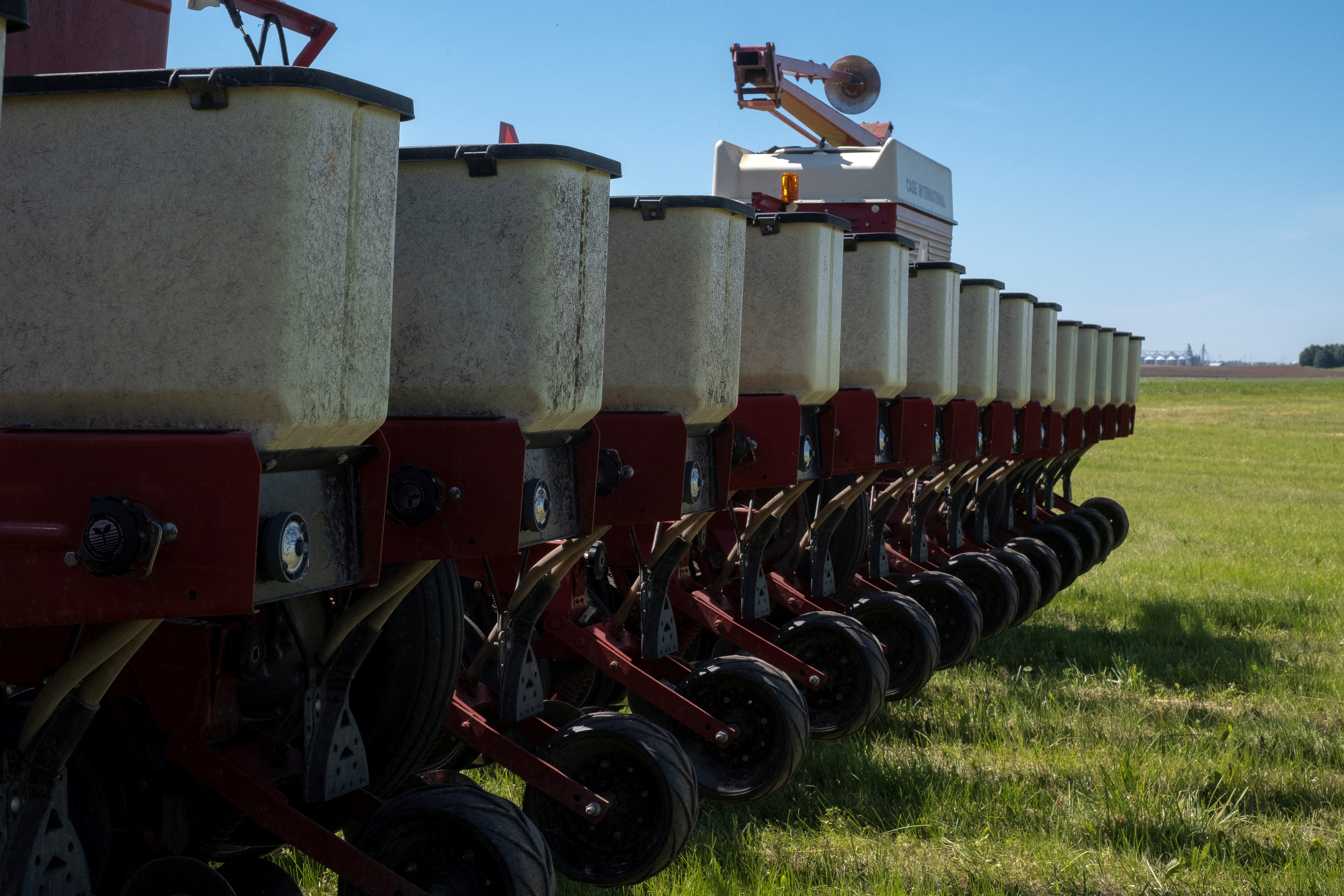pctay123
Publish Date: Fri, 13 Sep 2024, 07:54 AM

NAPERVILLE, Illinois, Sept 12 (Reuters) - The grain market moved one step closer to settling the size of the U.S. corn and soybean crops on Thursday with fresh projections from the U.S. Department of Agriculture.
But the question now is whether the final harvest volumes could be bigger or smaller in a way that could materially change the current fundamental landscape, where supplies are very ample.
USDA on Thursday pegged 2024-25 U.S. corn production at 15.186 billion bushels, the second largest crop on record and up slightly from August. Yield rose to 183.6 bushels per acre (bpa) versus 183.1 forecast in August, against trade expectations that yield would decline.
Despite corn yield and production landing above the range of analyst estimates, traders were not overly disappointed with the numbers as CBOT December corn futures ended Thursday’s session fractionally higher.
U.S. soybean production was as expected on Thursday with a yield of 53.2 bpa, matching both the analyst predictions and USDA’s August forecast. That maintained the record crop target, though traders may have been bracing for even bigger numbers as November soybeans jumped 1% during the session.
But are the bigger numbers yet to come? Final corn and soy harvested areas tend to be lower than those predicted at this time of year, but the yield direction is not as straightforward.
YIELD TRENDS
Final U.S. corn yield has been higher than USDA’s September projection in 12 of the last 20 years. But only five of those 12 years featured stronger corn yields in September than what USDA had slated in July.

In other words, it is more likely for final yield to be larger than in September when the September number is already somewhat light, and that is definitely not the situation this year.
USDA’s 183.6-bpa corn peg is above the July trendline yield of 181 bpa, and this month’s estimate is some 3.6% above last year’s record yield. The last times USDA’s September estimate towered similarly above the prior highs were in 2004 and 2014.
All those same ideas hold for soybeans. Final soy yield was higher than in September in 13 of the last 20 years, but only four of those 13 times occurred when the September yield was higher than in July.

The 53.2-bpa soybean yield is above the July trendline of 52 bpa and 2.5% above the prior record set in 2016. Within the last two decades, only 2014 and 2016 featured September soy yield forecasts that represented even bigger records.
BALANCE SHEET DAMAGE?
If recent trends lend to the whittling of corn and soybean yields, and thus production, what could the implications be for overall supply?
In recent years when final corn and soybean yields were lower than in September, the average reduction was about 2% for both crops.
If final corn yield was 2% lower than in September, that would still result in a record 179.9 bpa but take about 300 million bushels off production.
That would keep 2024-25 ending stocks about a third larger than observed between 2020-21 and 2022-23, and that is before making any reductions to demand, which would be necessary if the crop was smaller.
If soybean yield ends up decreasing by 2%, production falls by 92 million bushels. Before demand adjustments, ending stocks would be around 75% heavier than the tighter levels observed between 2020-21 and 2022-23.
While it is certainly not impossible for USDA to throw the market corn and soy yield curve balls in the months ahead, they would have to be extraordinary deviations to significantly alter the current market climate given how large carryout estimates already are for 2024-25.
Karen Braun is a market analyst for Reuters. Views expressed above are her own.
Sign up here.
https://www.reuters.com/markets/commodities/huge-us-corn-soy-yields-could-stave-off-further-increases-2024-09-13/












